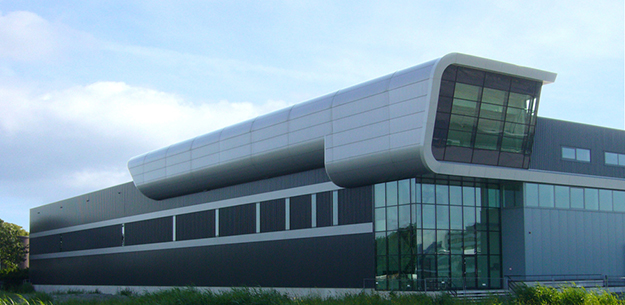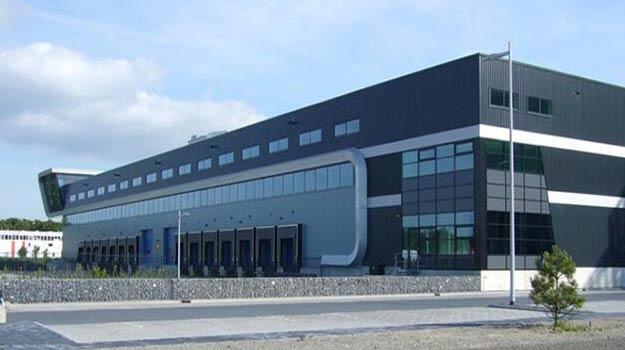Tata Steel, one of Europe’s largest steel producers, has launched a pioneering BIM and product data tool for all of its European construction brand products, to support architects, specifiers, engineers and facility managers.
Circular construction, where a building is erected using materials that can later be reused or recycled after possible demolition, is becoming increasingly popular. SAB cladding is ideal for use within this design philosophy. Bauke Bonnema, Marketing Manager Construction & Infrastructure at Tata Steel, explained this development based on a recent construction project, which for Tata Steel won a Steelie Award from the World Steel Association: a cradle-to-cradle distribution centre at Schiphol (NL).


A growing world population and increasing prosperity places enormous pressure on raw materials. This makes it necessary to switch from a so-called Linear Economy (take, make, throw away) to a Circular Economy, where the value and properties of raw materials are retained at the end of the lifespan of the products and constructions. For Europe, which is for a large part dependent on the import of raw materials, this is a spearhead of policy, where construction is the focus of attention. A lot of materials are used in this sector.
Bauke: “Steel is ideal for Circular Construction: not only is steel the only construction material that is already recycled on a large scale, but more importantly steel retains its properties or can even be improved during recycling. This is called upcycling. Competing materials are downcycled, for example, used as rubble or burnt or used as roadside poles. They are therefore not circular materials.”
The Tata Steel Marketing Manager takes a constructive approach to projects where circular construction is applied in practice. He was involved in the development and construction of a cradle-to-cradle distribution centre at Schiphol together with Coert Zachariasse, the CEO of the Delta Development Group (DDG). When the developer of Park 2020 wanted to set up a new distribution centre at Schiphol based on circular construction, steel was the most logical choice.
Bauke: “We saw a perfect opportunity to work together with Zachariasse, who was recently ranked by Fortune magazine as one of the top 25 Ecological Innovators in the world.”
The result is a cradle-to-cradle distribution centre that can be fully disassembled. All parts were connected with screws and the floors were installed separate from the support structure. In addition, the module sizes were so chosen that maximum reuse of the columns and beams will be possible. Finally, all material data was saved in a so-called “Materials Building Passport”, so that all the information can be accessed using Information Technology (e.g. Ebay) in the future.
Cradle-to-cradle distribution centre
With low-temperature heating, high-frequency lighting, balanced ventilation and cooling, a CO2-purifying truck court, healthy construction materials and a steel support structure that can be fully recycled down to the original parts, Fokker 7/8 is a real cradle-to-cradle logistics distribution centre.
Not only does the high future residual value lead to lower depreciation costs, it also appears that staff costs are lower in a sustainable building owing to higher productivity. Bauke: “A nice business card where the materials of Tata Steel are not lacking. SAB-profiel in IJsselstein supplied the interior cladding and the façade cladding.”
As liner tray, [SAB B110/600] was chosen; the façade was clad with anthracite-grey (RAL 7016) trapezoidal profiles [SAB 35/1035] and a pitch black (RAL 9005) [SAB 40/915]. The materials were installed by De Rooij-Snoeren-Combinatie B.V. from Raamsdonkveer (NL).
In October 2015, the project won a Steelie Award from the World Steel Association in the category 'Excellence in Life Cycle Assessment'. The prize was awarded to Tata Steel Europe for the use of LCA to show what the effect is of recycling steel in the Fokker 7/8 distribution centre.











































































































































































